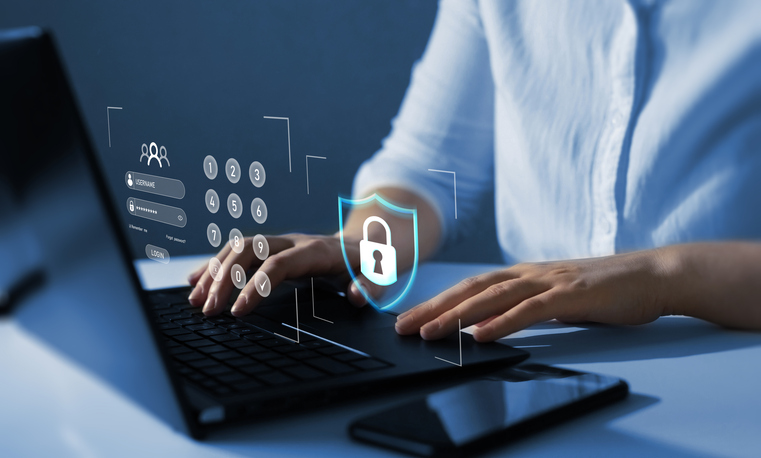5 min read
Guarding Every Endpoint: Strategies for Effective Cybersecurity Implementation
Imagine for a moment, your home, filled with the hum of interconnected gadgets and devices, from smart thermostats to fitness trackers, all designed...
3 min read
 The Amazing Team at Force One
:
Apr 22, 2024 12:32:47 PM
The Amazing Team at Force One
:
Apr 22, 2024 12:32:47 PM
In a world where digital threats lurk around every corner, staying a step ahead in cybersecurity isn't just wise—it's essential. But let's be honest, diving into the world of endpoint and email monitoring analysis can feel like decoding a foreign language. That's where I come in. My journey into cybersecurity started much like yours, filled with curiosity and a few hiccups along the way. But, guess what? Understanding the ins and outs of cybersecurity isn't just for the tech wizards; it's for anyone armed with the right knowledge. So, let's break it down together and turn those daunting cybersecurity challenges into opportunities for growth and protection.
Picture this: Your digital world is a bustling city, and your devices are the buildings within it. Just like a city relies on security measures to stay safe, your digital realm needs endpoint security to protect against unwelcome visitors. Endpoint security is all about safeguarding the devices connected to your network—be it your laptop, smartphone, or tablet—from malicious activities. It’s your personal cybersecurity guard, keeping a vigilant watch over your digital domain.
On the other side of the coin, we have email security. Think of email as the city’s postal service, delivering messages to and from the outside world. It's a critical service, but unfortunately, it's also a popular route for cyber threats like phishing scams. Email security measures ensure that the only messages getting through are the ones you actually want to receive.
Remember when I mentioned starting my cybersecurity journey? Well, my first encounter with a threat was a cleverly disguised phishing email. It looked so genuine that I almost clicked on the malicious link. That moment was a wake-up call about the importance of email security and being vigilant about every click.
Now, let’s get into the nuts and bolts of fortifying our cybersecurity defenses.
For Endpoint Security:
For Email Security:
Implementing these strategies might seem daunting, but remember, every step toward better cybersecurity is a step away from potential digital disaster.
Let's take inspiration from the big players. A global e-commerce giant recently thwarted a sophisticated cyber attack, thanks to their robust endpoint security system. By continuously monitoring device logs and employing advanced threat detection algorithms, they were able to identify and isolate the attack before any real damage was done.
Another success story comes from a leading financial institution that used advanced email filtering and anomaly detection techniques to stop a massive phishing campaign aimed at their employees. This proactive approach not only protected their data but also saved them from potential financial loss and reputational damage.
These stories underscore the power of proactive cybersecurity measures. And while we might not be guarding against threats on such a grand scale, the principles of vigilance and proactive monitoring apply just as much to us as individuals.
Embarking on your cybersecurity journey can feel like stepping into the unknown, but remember, every expert started somewhere. Here’s what we’ve learned together:
Key Takeaways:
Cybersecurity isn’t just for the IT department—it’s for everyone. By taking steps to protect your digital footprint, you're not just safeguarding your personal information; you're contributing to a safer digital world for us all. So, let's keep learning, stay curious, and above all, stay secure.
Also Read: The First Line of Defense: Effective Physical Security Measures
If you're interested in more job tips and ways to advance your career in the cybersecurity field, check out more details at ForceOne Cybersecurity. Together, we can build a safer digital future.
FAQs
1. What is endpoint security, and why is it important?
Endpoint security is the practice of protecting the devices that connect to your network (like computers and smartphones) from cyber threats. It’s crucial because compromised devices can lead to data breaches and other security incidents.
2. How does email security protect me from phishing attempts?
Email security tools scan incoming messages for signs of phishing, such as suspicious links or attachments, and can block these messages from reaching your inbox, thus protecting you from potential scams.
3. Can regular traffic analysis genuinely prevent cyber attacks?
Yes, by monitoring network traffic for anomalies, organizations can detect and respond to potential threats before they escalate into full-blown attacks.
4. What are appliance logs, and how do they contribute to cybersecurity?
Appliance logs record events and transactions that occur within network security appliances, like firewalls. Analyzing these logs helps identify unusual patterns that may indicate a cybersecurity threat.
5. How can I start improving my cybersecurity posture today?
Begin by updating all your devices and software to the latest versions, use strong, unique passwords for all your accounts, and educate yourself on common cyber threats and how to avoid them.

5 min read
Imagine for a moment, your home, filled with the hum of interconnected gadgets and devices, from smart thermostats to fitness trackers, all designed...

4 min read

3 min read
In today's fast-paced digital landscape, the importance of robust security frameworks cannot be overstated. Every organization, regardless of size or...